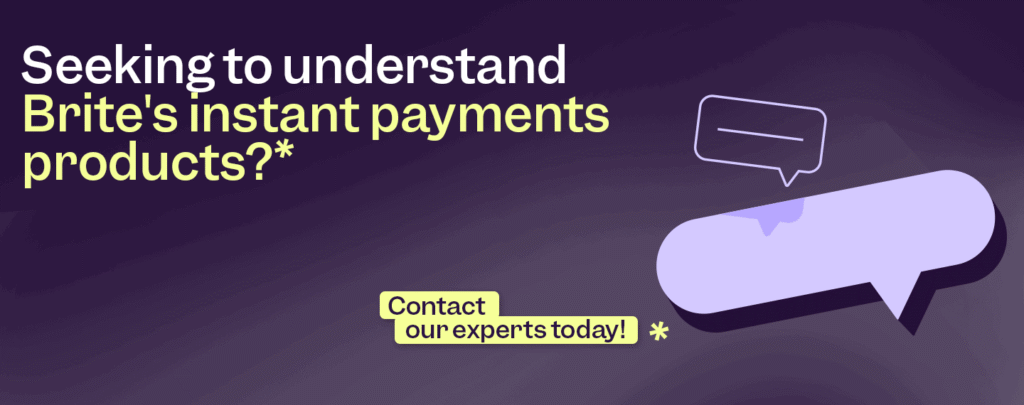
Over the past decade, the subscription economy has transformed how companies generate revenue. Market projections estimate it’ll reach a value of $3 trillion this year. Subscription businesses are thriving – and with open banking reshaping how people pay, manage, and control their money, new doors are opening for them, too.
Under open banking, consumers get secure, consent-based control over their financial data. It requires banks to open access to customer account data and payment services to regulated third parties.
For subscription businesses, this shift isn’t just technical: it’s transformative. Open banking powers faster, more secure, and flexible ways for customers to pay, while helping businesses reduce costs, improve cash flow, and deliver a smoother, more reliable subscription experience.
In this article, we’ll explore how open banking works for subscription payments, why it’s gaining momentum, what innovations like instant account-to-account (A2A) payments and Variable Recurring Payments (VRPs) mean for both businesses and consumers, and how FIDA and open finance are set to shape the future of recurring payments.
Topics covered include:
- Understanding open banking for subscription payments
- Open banking and recurring payments
- How A2A payments enhance subscription payments
- Benefits of instant A2A payments for businesses and consumer subscription payments
- FIDA and open finance: The next evolution of subscription payments
Understanding open banking for subscription payments
Open banking is reshaping the way people manage and move their money – and now, it’s creating new opportunities for subscription businesses, too.
At its core, open banking is about giving consumers more control over their financial data. The foundation for open banking in Europe comes from the Second Payment Services Directive (PSD2), which mandates that banks must open up access to customer account data and payment initiation services to licensed third parties – with the customer’s consent.
Open banking allows individuals to securely share their banking information with authorised third-party providers. These providers can then access relevant accounting data or initiate payments directly from a customer’s bank account without needing to go through traditional card networks.
For subscription businesses, open banking comes with key benefits:
- Enhanced security: Thanks to Strong Customer Authentication (SCA) – a key requirement under PSD2 – open banking payments are subject to additional layers of verification, making them highly secure and reducing the risk of fraud.
- Greater control for consumers: Open banking payments offer transparent, direct connections between the consumer and their bank, giving consumers clearer visibility and control over their payments.
- Access to real-time data: Subscription businesses can benefit from real-time payment confirmations and up-to-date account information, helping them manage cash flow more effectively and reduce failed payments.
As open banking adoption grows, it’s quickly becoming a valuable tool for subscription businesses looking to offer customers a smoother, safer, and more flexible way to pay.
Open banking and recurring payments
For subscription businesses, open banking has introduced new ways to collect recurring payments without relying on cards or direct debits. By using account-to-account (A2A) payments alongside secure customer verification services, businesses can enable recurring payments flows that are fast, efficient, and cost-effective.
These setups are already being adopted by sectors like charities and mentorship organisations, where recurring donations or subscriptions can be initiated through a one-time authentication and then maintained through secure, tokenised bank connections.
Compared to traditional methods, A2A-based recurring payments offer:
- Faster onboarding: Customers can approve recurring payment permissions instantly through their bank.
- Reduced failure rates: Payments are made directly from the customer’s bank account, avoiding issues like expired cards or failed direct debits.
- Lower transaction costs: Open banking payments often bypass card network fees, reducing costs for merchants.
This new approach to recurring payments is especially attractive for businesses with regular billing models, giving them more control, greater reliability, and a streamlined customer experience.
You might also be interested in: Ultimate Guide to Recurring Payments.
A look ahead: Variable Recurring Payments
While still in the early stages of adoption (and largely limited to the UK), Variable Recurring Payments (VRPs) represent the next step in open banking innovation.
VPRs allow customers to authorise a business to take variable payments from their bank account – within user-defined parameters – offering a more flexible and secure alternative to traditional methods.
Although not yet widely available, VRPs are expected to gain traction as open banking standards evolve and more banks support the capability.
Can you block a subscription payment from your bank account?
The short answer is yes – you can.
With traditional subscription payments via direct debit or card-on-file, cancelling or blocking a recurring payment often means navigating customer service channels, waiting days for confirmation, or worrying about payments slipping through in the meantime. Open banking is changing that.
Thanks to the way open banking payments and recurring payments are designed, customers have far greater control over their subscriptions. Once a recurring payment is set up, you can view, manage, or block it directly from your banking app.
Looking ahead, the upcoming PSD3 (the proposed update to PSD2) is set to strengthen these consumer rights even further. It aims to improve transparency and reinforce customers’ ability to manage their payment permissions and revoke consent whenever they choose.
How A2A payments enhance subscription payments
As mentioned above, A2A payments, enabled by open banking, offer a direct and efficient way to move money between a customer’s bank account and a business – without intermediaries like card networks.
Here’s a closer look at how they improve subscription payment models:
Use of instant payments
A2A payments can be processed in real time, meaning funds move immediately between bank accounts. This minimises delays in payment confirmation and gives businesses faster access to their revenue.
Brite Payments’ Instant Payments take this a step further, ensuring subscription payments are settled instantly, which helps improve cash flow and reduce the risk of failed or delayed transactions – a key advantage for businesses with recurring payment models.
Read more: Your Essential Guide To Instant Payments Regulation (IPR).
Reduced friction
A2A payments remove common pain points from the subscription setup process – no card details to enter, no expiry dates to track, and no need to update payment information when a card is lost or replaced.
Brite Payments simplifies the checkout experience even further, offering a seamless, app-free journey where customers can authorise payments directly through their trusted bank environment. With options like one-click payments for returning users, Brite Payments makes starting and managing subscriptions fast, secure, and hassle-free.
Customer example: Northe
While they primarily focus on EV charging payments and payouts, Northe’s case study highlights the importance of enhanced user experience and seamless integration – both essential for any recurring payment setup:
“What our customers appreciate most – and I feel like we’re doing an excellent job at this – is that they don’t have to speak to us. We take care of charging for them, and they get paid accurately and on time every month.”
This hands-off, reliable experience is exactly what subscription customers value: smooth, invisible payment processes that just work, without unnecessary interactions or payment issues.
See Northe’s case study here.
Lower costs
A2A payments cut out card schemes and the transaction fees that come with them, giving businesses a lower-cost alternative to cards and direct debits. For high-volume subscription services, the savings quickly add up.
Customer example: Auctionet
Though not a subscription business, Auctionet’s case study highlights the same principle of cost reduction for recurring transactions. By shifting payments to Brite, they’ve been able to eliminate the high and unpredictable fees tied to traditional card payments and unlock operational savings:
“Approximately 20% of payments for onboarded auction houses are now processed via Brite, eliminating the high and unpredictable fees associated with traditional card payments.”
It’s a clear example of how A2A payments deliver both immediate cost benefits and long-term efficiency.
See Auctionet’s customer story here.
Increased security and fraud reduction
Backed by SCA and a direct connection between bank accounts, A2A payments are built for security. They dramatically cut the risk of fraud, chargebacks, and payment misuse compared to card-based payments.
Customer example: Billecta
Billecta’s case study highlights the importance of reliability and security in recurring payment infrastructure. Focused on improving account information services (AIS) for invoice automation, they turned to Brite to deliver the performance their customers depend on.
“Brite provided us with the reliability of service that our customers (and their customers) demand, helping us improve our performance and deliver a better AIS service.”
It’s a reminder that for subscription businesses, trustworthy, secure infrastructure isn’t a nice-to-have: it’s essential.
See the Billecta Case Study here.
Smart reconciliation
One of the hidden headaches of subscription payments is managing payment data and reconciling incoming transactions. Brite Payments’ A2A solutions simplify this by providing clean, real-time payment data that slots straight into back-office systems, reducing manual effort and errors.
Customer example: Billecta
Billecta showcases how automating the entire invoice flow – including the reconciliation of incoming payments – drives operational efficiency. With Brite Payments, they’ve streamlined processes and improved accuracy, saving valuable time for their team.
Customer example: Northe
Similarly, Northe highlights operational efficiency as a key benefit, with Brite Payments powering fast, automated reimbursements for their EV charging network – a recurring payout model that mirrors the demands of subscription management.
The result? Less admin, fewer errors, and a smoother financial operation.
Benefits of instant A2A payments for businesses and consumer subscription payments
Instant A2A payments aren’t just a technical upgrade: they unlock meaningful advantages for both businesses and consumers in the subscription economy.
Here’s how:
For businesses:
- Predictable cash flow and revenue stability: Instant settlement means funds arrive faster, making it easier for businesses to manage cash flow and forecast revenue with confidence.
- Reduced operational costs: By bypassing card networks and cutting out high transaction fees, businesses save on every payment. Plus, automated reconciliation reduces manual admin and accounting workload.
- Higher conversion rates: A smoother, frictionless payment experience – no card details, no expiry dates – means more successful sign-ups and fewer failed payments.
- Enhanced security and fraud prevention: With SCA built in and no sensitive card data involved, the risk of fraud and chargebacks drops significantly.
- Better customer retention: Seamless, hassle-free payments keep customers happy. When transactions are reliable and invisible in the background, it strengthens trust and long-term loyalty.
For consumers:
- Simpler, faster, and more convenient payments: No card details to enter, no apps to download. Customers can authorise payments instantly through their bank – often with a single click for repeat transactions.
- Enhanced security and control over their subscriptions: Open banking empowers consumers to manage, pause, or cancel subscriptions directly from their banking app, putting them firmly in control.
- Reduced risk of failed payments and service interruptions: No expired cards or lost card issues means fewer failed payments – and that means fewer unexpected service disruptions for customers.
- Greater transparency on recurring charges: With open banking-powered A2A payments, customers get clear, real-time visibility on recurring payments, helping them stay informed and in control of their finances.
FIDA and open finance: The next evolution of subscription payments
While open banking has transformed how subscription payments are made and managed, the next chapter is already taking shape with FIDA (the Financial Data Access regulation).
Proposed under PSD3, FIDA aims to expand secure, consent-based data sharing beyond payment accounts to include a broader range of financial products, like mortgages, savings, pensions, and investments.
For consumers, this means even more control over their financial world – and for businesses, it opens the door to smarter, more personalised subscription services and financial management tools. It’s a natural evolution toward a fully connected, consumer-driven financial ecosystem.
Read more: What Is Financial Data Access (FIDA)? And What Does It Mean for Your Business?
Conclusion
Transforming how you provide subscription payments is now more important than ever. With more change across a variety of industries, now is the time to get ahead of the competition.
If you would like to know more about the benefits of combining instant A2A Payments with data services for slick and efficient subscription payment services, contact Brite’s payment experts today.

